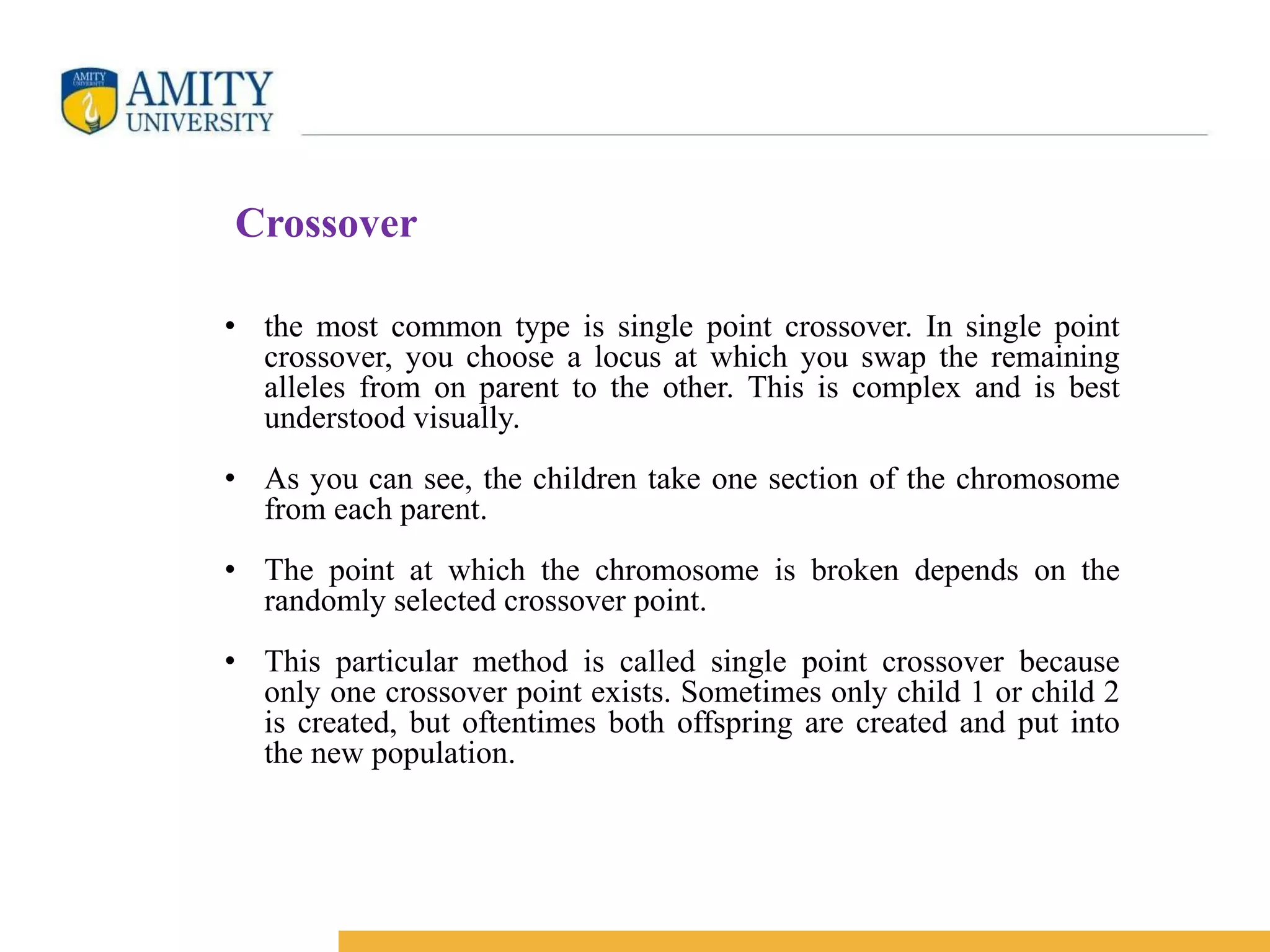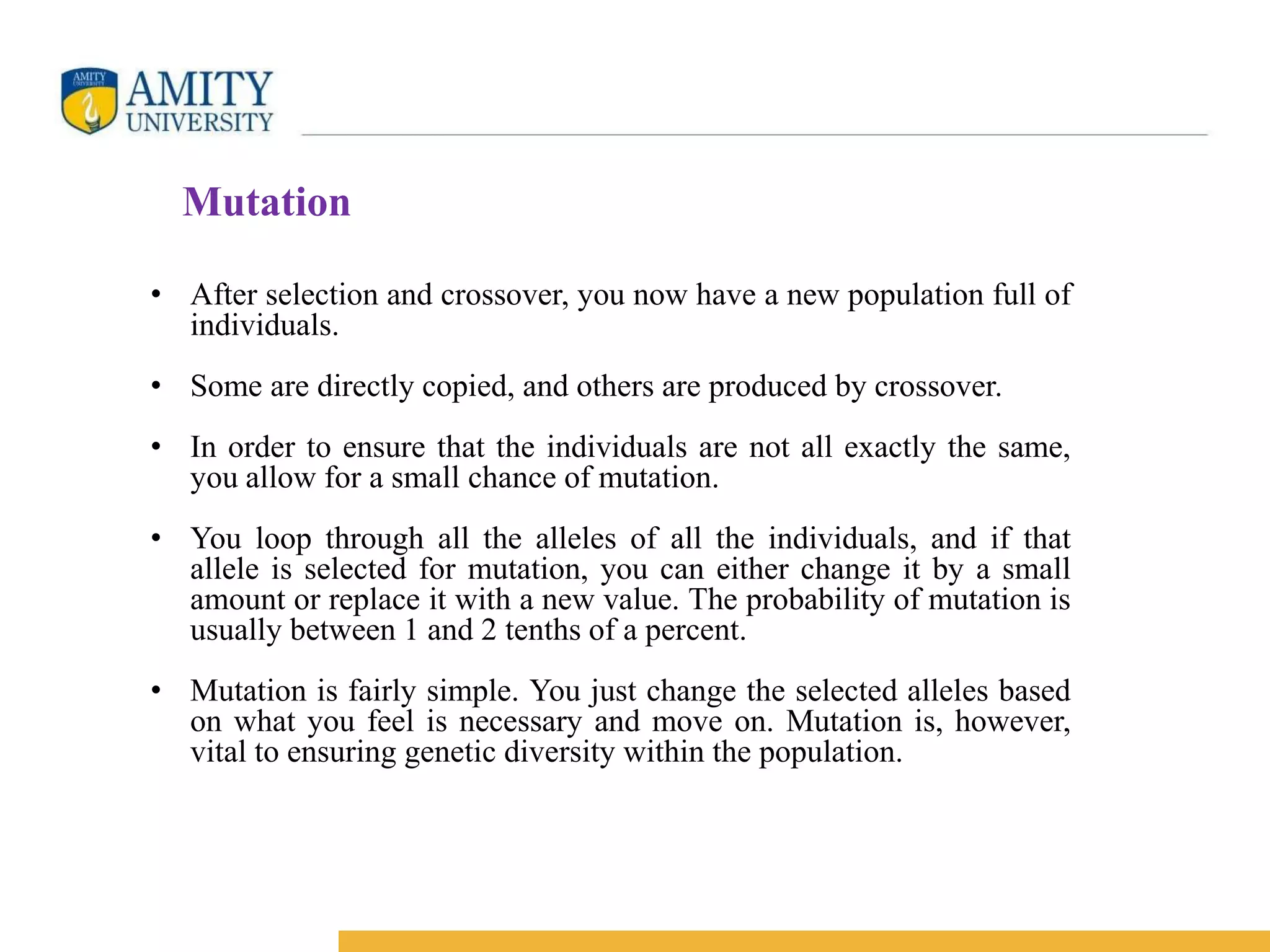Genetic algorithms are search and optimization techniques inspired by evolutionary biology. They work by generating an initial population of potential solutions, then selecting and recombining the fittest individuals to produce a new generation, with occasional random mutations. The fitness of each individual is evaluated using a fitness function, and the process repeats until a termination condition is reached. Genetic algorithms have been applied to problems in many domains due to their ability to efficiently explore large search spaces.
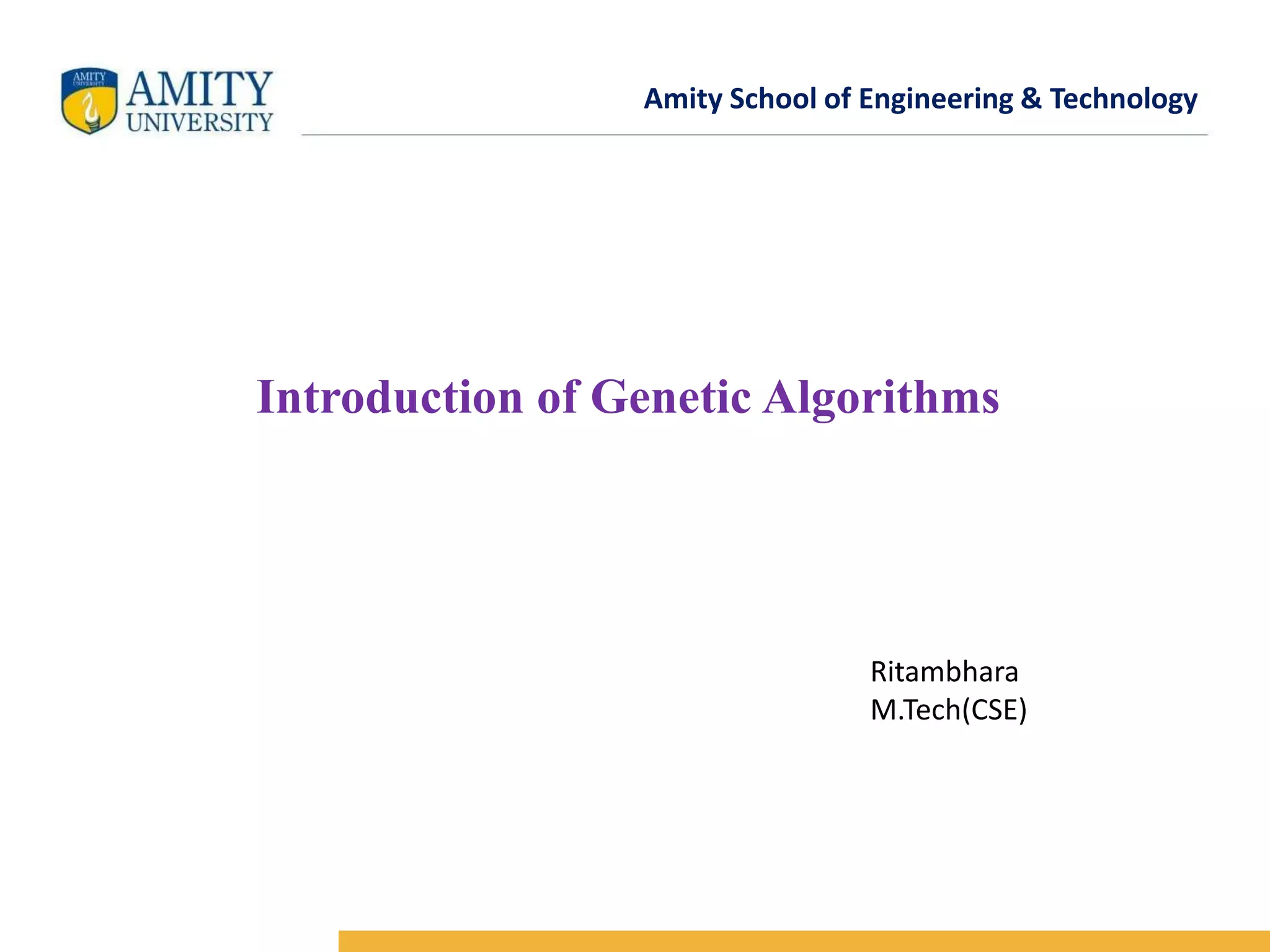
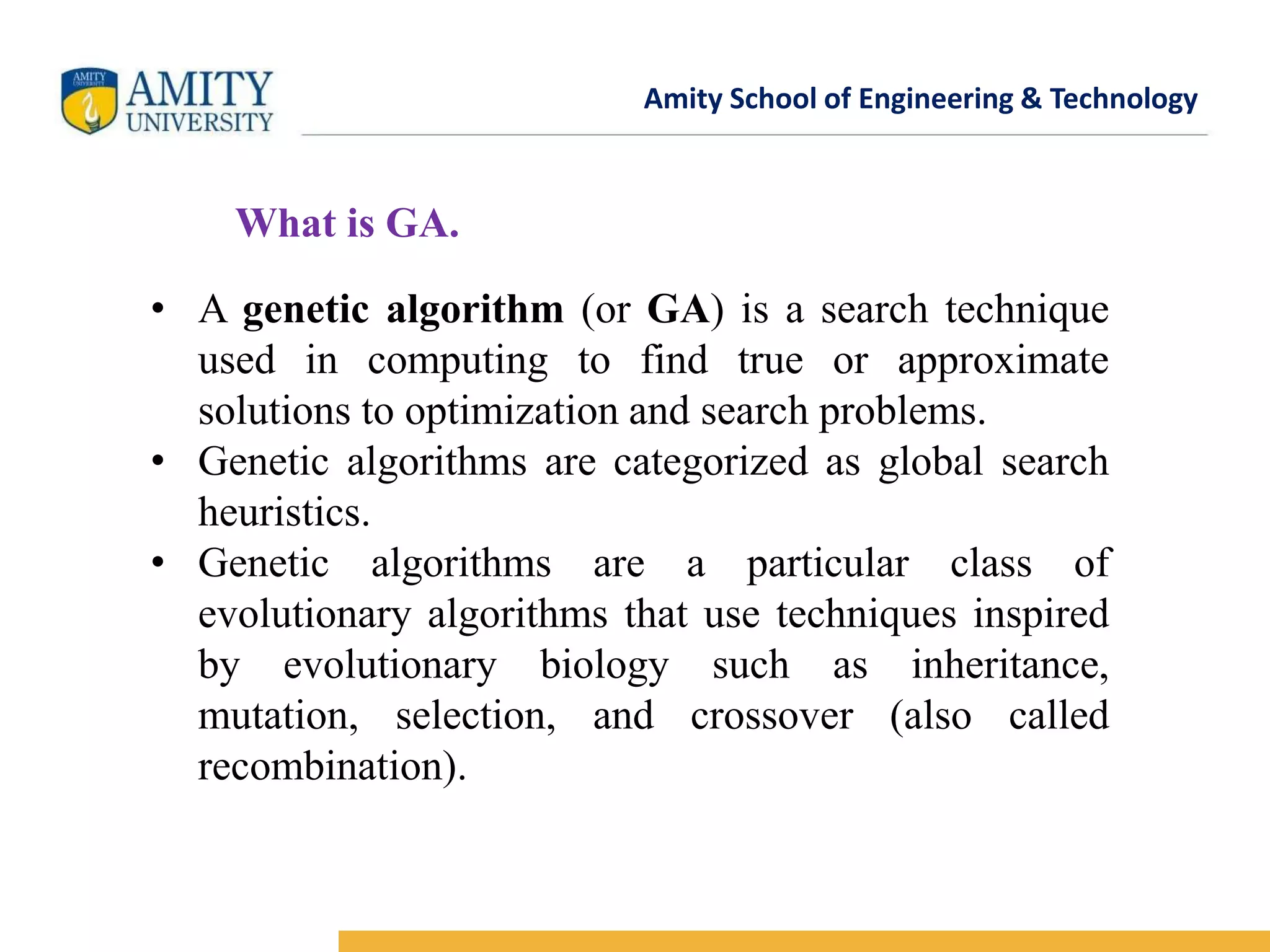
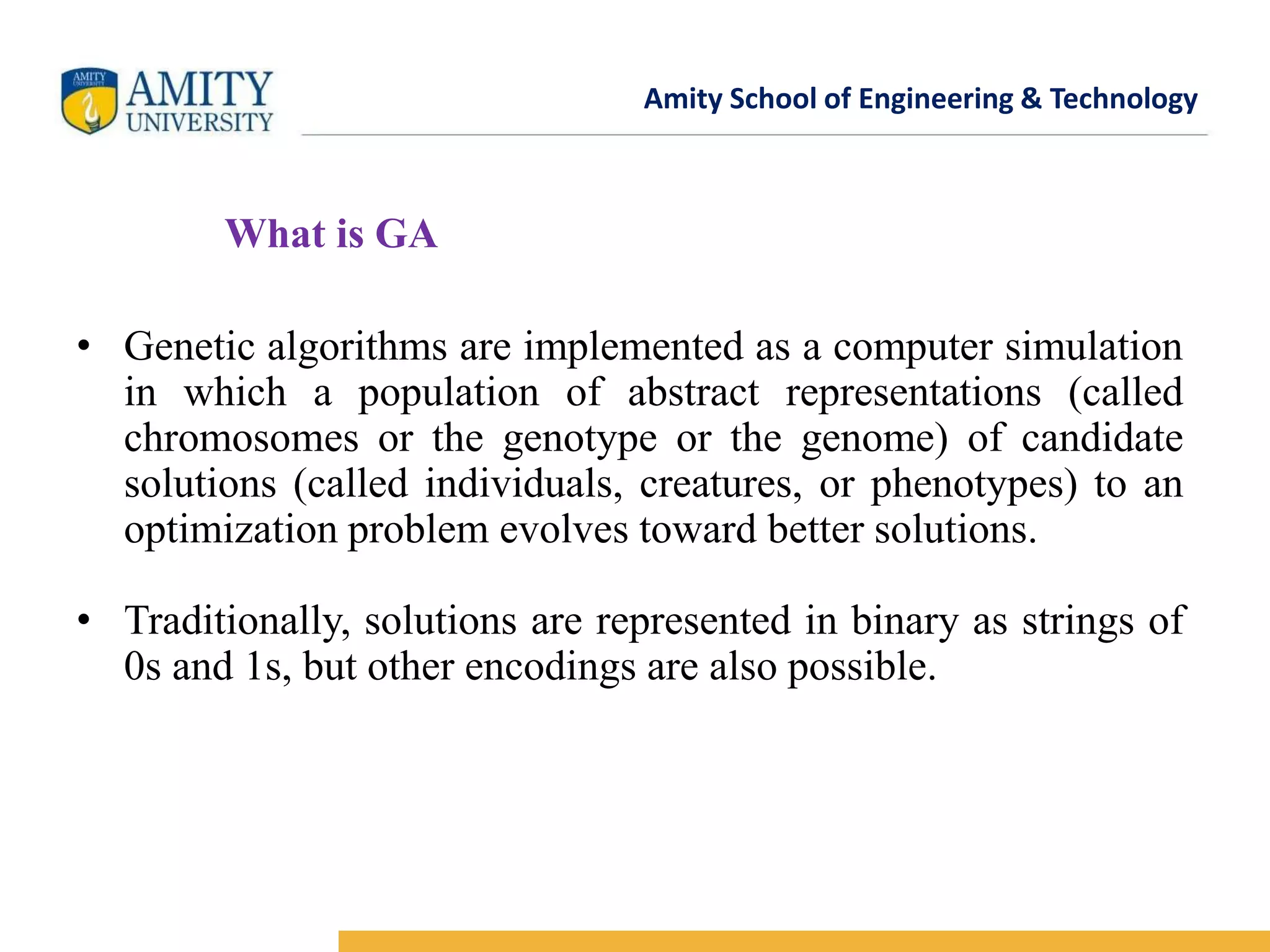
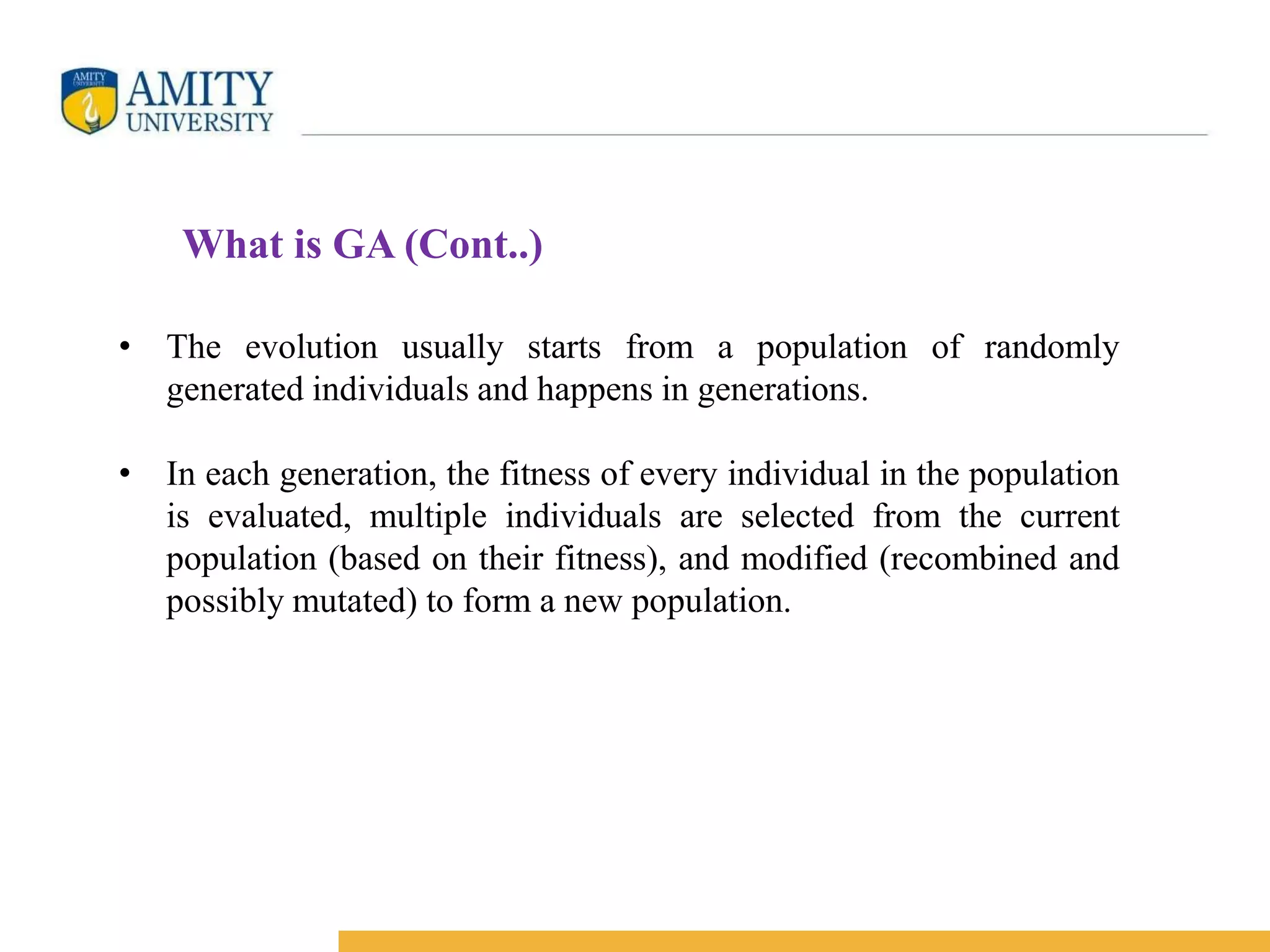
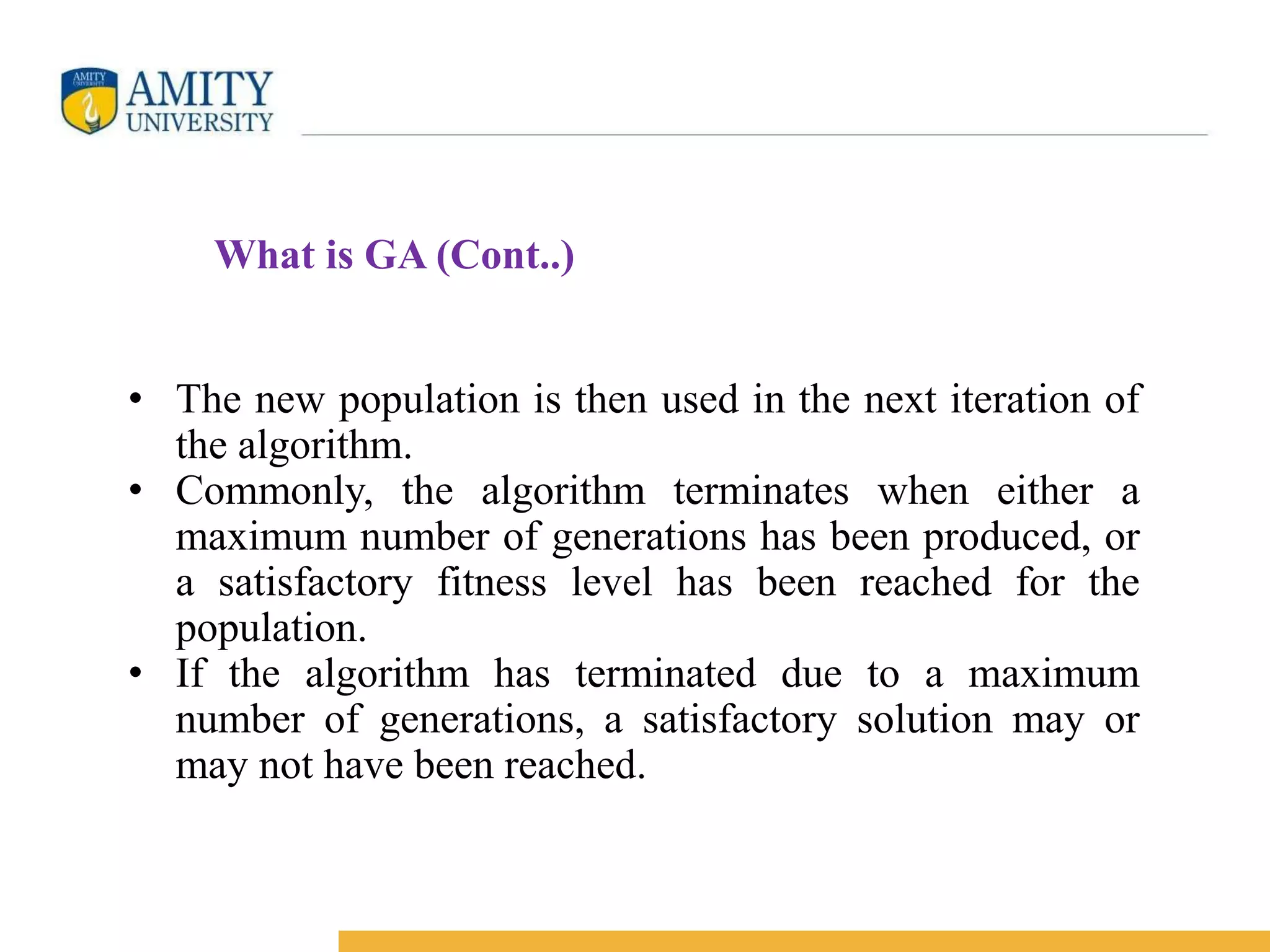
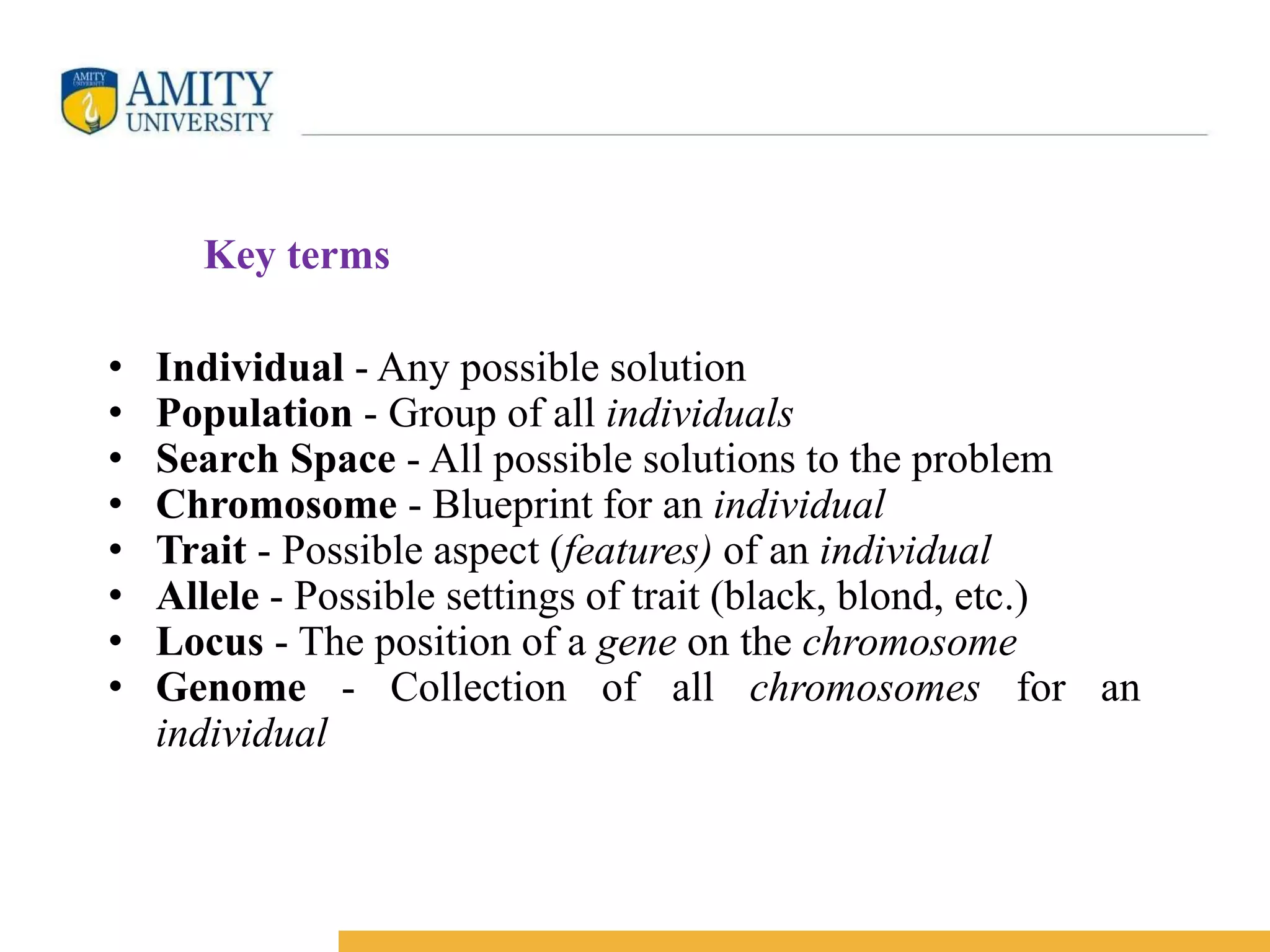
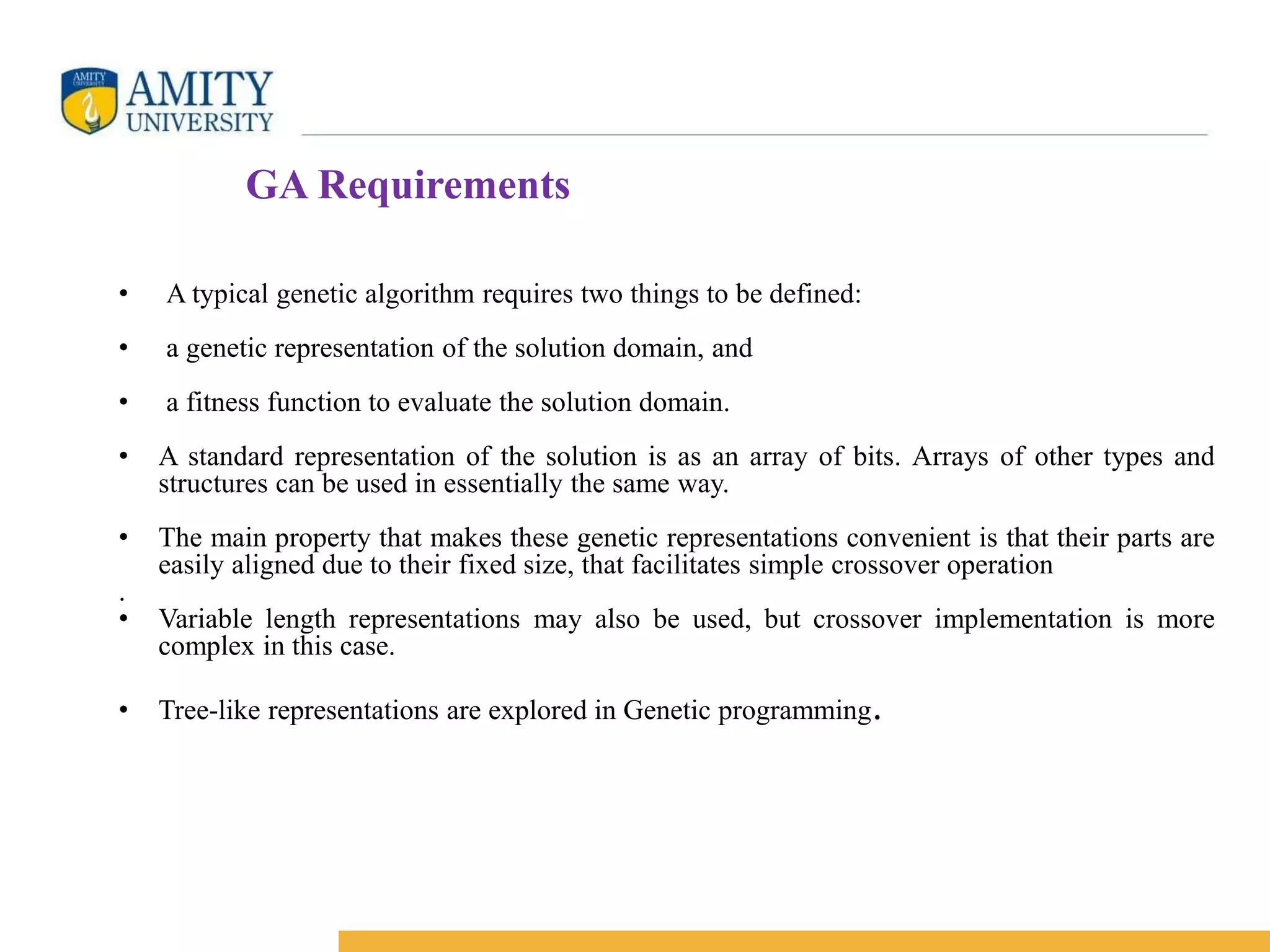
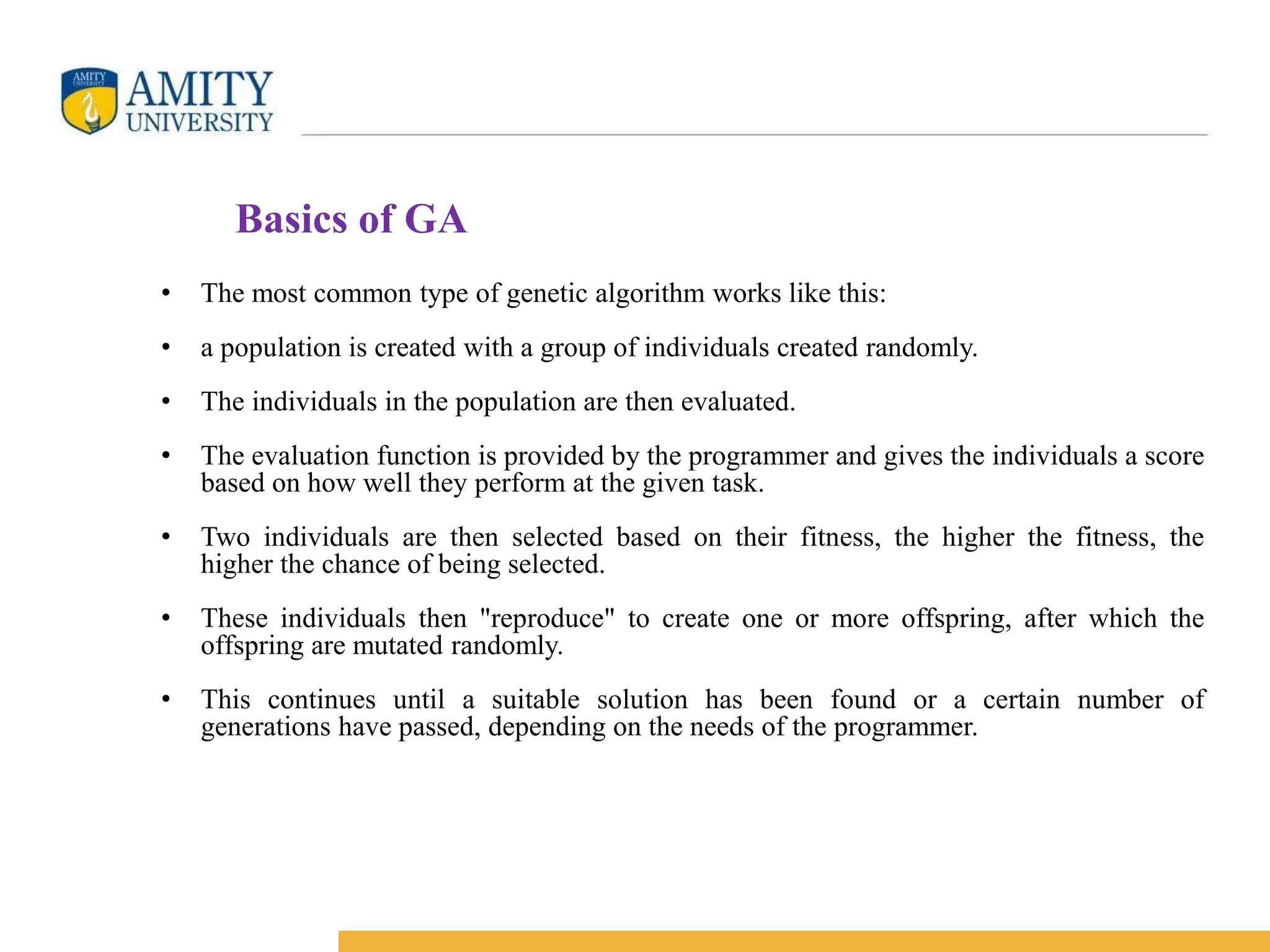
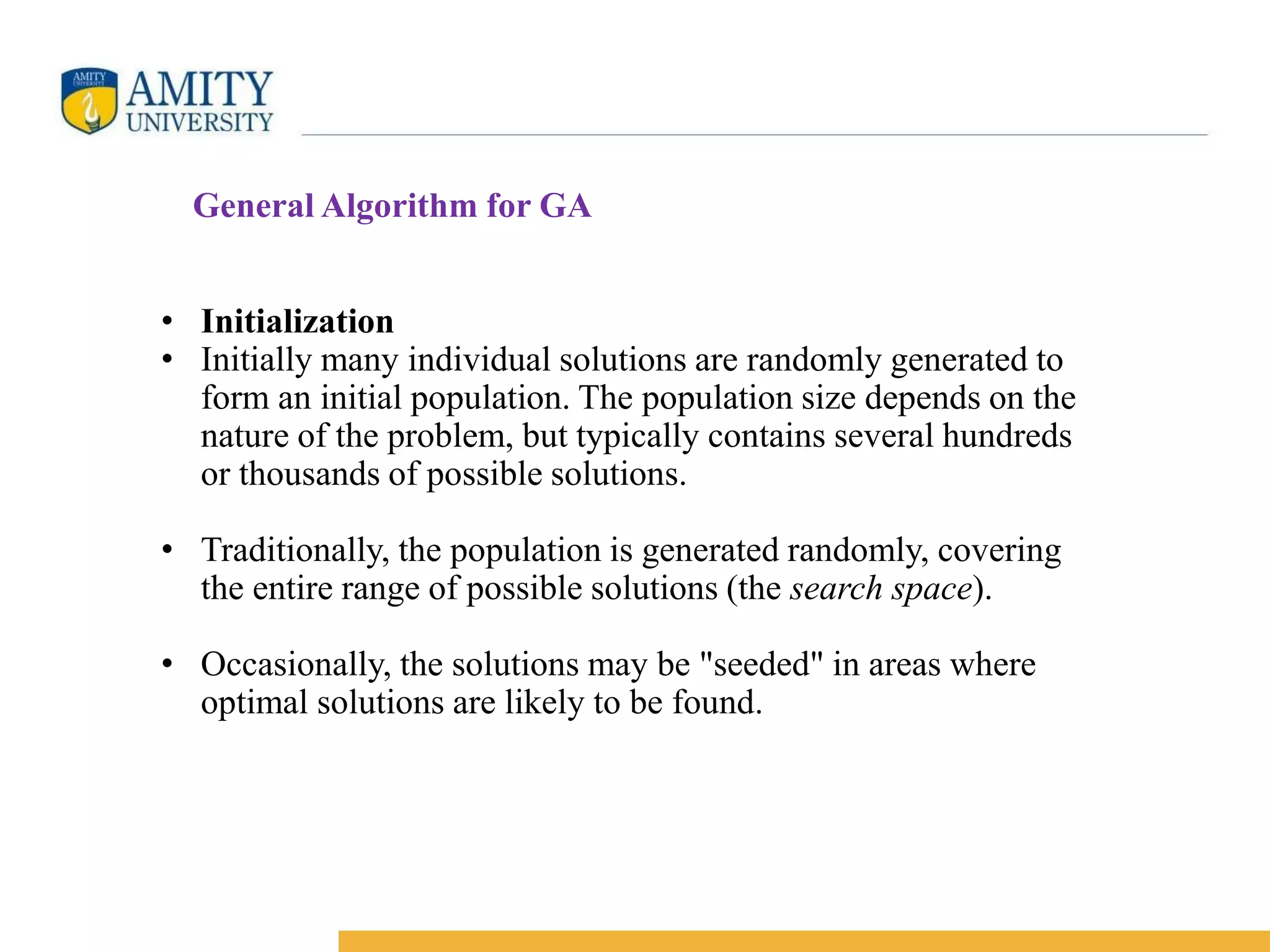
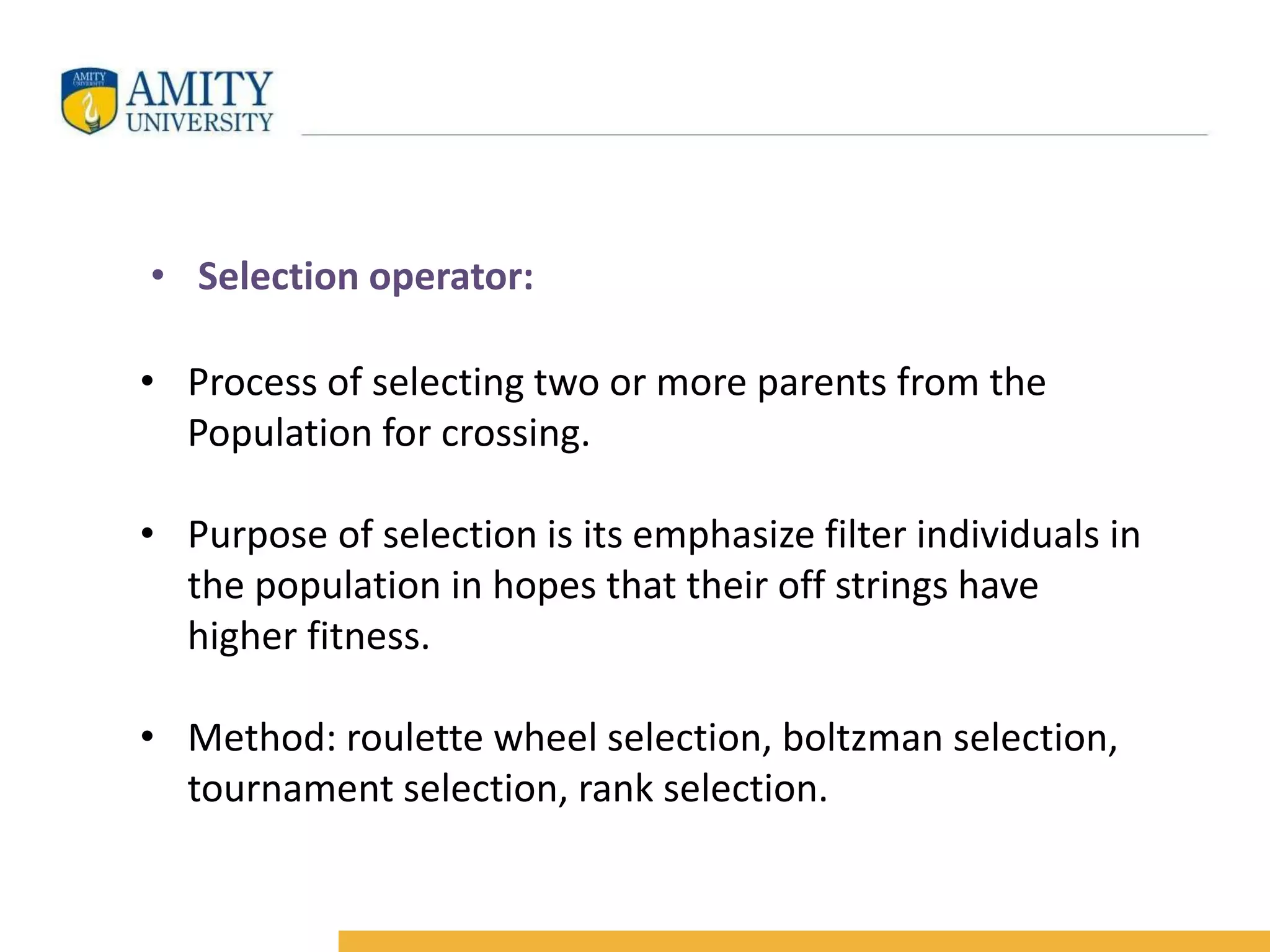
![Example Maximize the function f(x)=x^2 with x is interval [0,31] i.e., x= 0,1,………30,31 1) Generate initial population at random. They ate chromosomes or genotypes. Eg- 0110 (13), 11000(24), 01000(8), 10011(19) Calculate fitness a) Decode into an integer (called phenotypes) 01101 13, 1100024, 010008, 1001119 b) Evaluate fitness, f(x)=x^2 13169, 24526, 864, 19361 2)](https://image.slidesharecdn.com/amityppttemplate1-211222062017/75/introduction-of-genetic-algorithm-11-2048.jpg)
